Distressed Rug – Distressed for Success
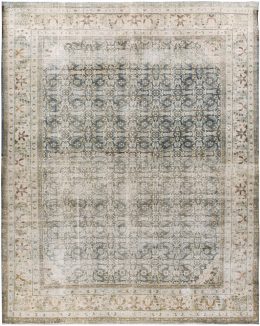
DISTRESS FOR SUCCESS Distressed jeans, distressed rug, what’s the connection? Distressed jeans are new, but made to look used. Distressed rugs, on the other hand, may in fact be old, but not the right kind of old. So, they are “improved” to get the right kind of aged look through chemical treatment and careful abrasion. The result is that colors lighten, palettes simplify and wear becomes evident. They look like they’ve been around the block a few times, but almost paradoxically they seem fresh and versatile in modern contexts. In current lingo, they are the coolest floor coverings around. WHAT
Day & Night Earning Your Stripes
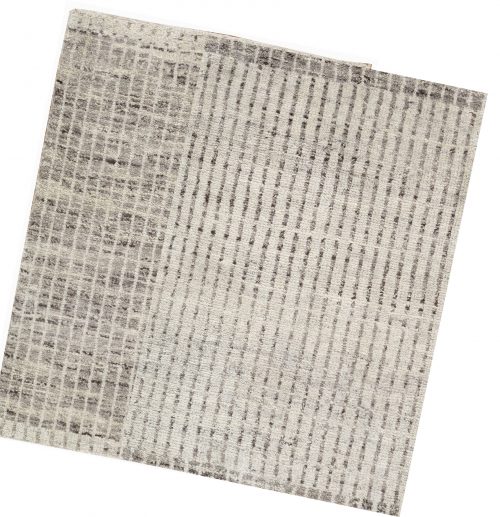
Day & Night Earning Your Stripes Two Contemporary Rugs in Allover Striped Patterns Day & Night are among the latest of Lida Lavender’s contemporary Indian rug creations and they differ as much as day & night. The designs of the “Organic” line ultimately derive from Moroccan rugs. In particular, the two tone old ivory/ grey brown palette has obvious Moroccan tribal references. But the texture is much heavier, firmer and full-bodied, than the Moroccan originals. And the designs are much more rigorous. “Day” is light, with beige predominating over variegated brown in a 2:1 ratio “Night” is just the opposite,
Spotlight on Special Rugs
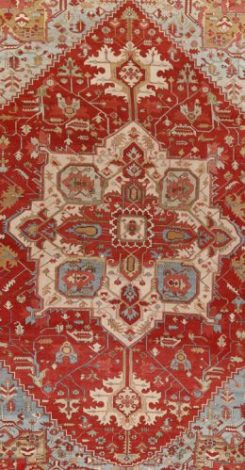
Spotlight on Special Rugs. Highlighting the Variety and Depth of Lida’s Collection. Fabulous Color in an Oversize Heriz Carpet D-348 Antique Persian Heriz Serapi Rug 14′ x 21′ Dark indigo blue is such a frequent dominant (or at least a strong secondary) tone in oriental rugs, that it is both surprising and eye-refreshing when it is absent. Such is the case with our bold antique Persian Heriz carpet with a palette emphasizing sky blue, ivory and ruby red. More than any other village or town weave, Heriz area carpets, be they of the Bakshayesh type with allover
Spotlight on Special Rugs – 1
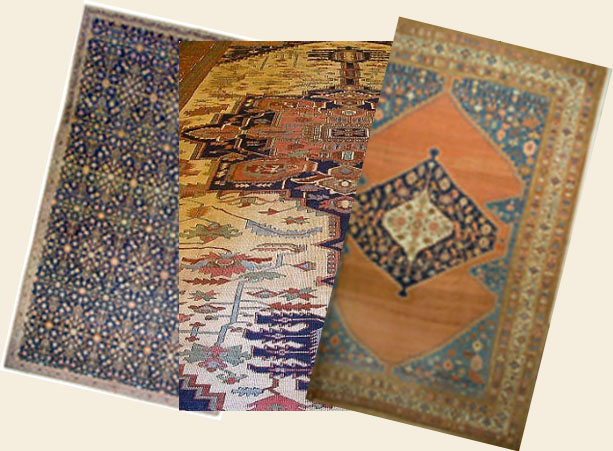
Spotlight on Special Rugs Heriz Rugs Three Unusual Heriz Area Rugs The usual Heriz rugs are in a 9’ x 12’ size medallion and corners semi-geometric, rustic creation. These three are, to varying degrees, none of the above. Rug CU-278 9’4 x 12’5 Consider first this Heriz rug. The border is minimal, the better to allow the repeating allover textile pattern to escape under it and extend to the very edges of the universe. The millefleurs- like pattern, executed in light colors, is cleverly delineated by thin, curving light lines to inscribe a cartouche pattern. But nothing is forced on
Aaaaaargh! My Rug Has Vanished !!!!!!!!!!!
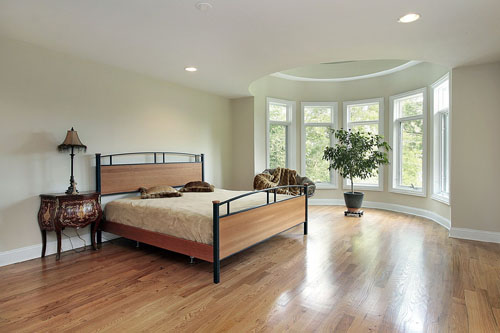
Aaaaaargh! My Rug Has Vanished How Did This Happen !!!!!!!!!!! First it was the color in the rug. Then the design in the rug went. Finally, the format disappeared. Now all I have is a bare floor no carpet! How did this happen AND what can be done about it? A Bit Of Rug History Before getting so hyperventilated, a bit of history is in order. By rug we mean the oriental room size or scatter rug. Going back to the 14th century, we find large Anatolian carpets on floors in Italian frescoes and easel paintings. Through the Renaissance this was
Tapestry Producing Areas and Styles

Tapestry Producing Areas & Styles Antique Tapestry – Most Antique Tapestries that are available nowadays are from France, Holland (known as Flemish), Belgium and England. Some of the more famous areas are Aubusson Situated on the banks of the River Creuse in France, has been well known for producing tapestries from around 1560. Audenarde/ Oudenaard A Belgian municipality in the Flemish province of East Flanders. Weaving tapestries from the 15th century Beauvais Is a town in northern France that started manufacturing tapestries from around 1600. Bruges Based in the Flemish region of Belgium. It is located in the northwest of the country. Weaving tapestries
Navajo Rug Record Tumbles
The world record price for a North American textile was smashed to smithereens at John Moran Auctioneers in Pasadena, California on 19 June 2012 when a Classic Navajo First-Phase Chief-style wearing blanket was bought for $1.8 million. The Chantland Blanket, woven in the mid-19th century from handspun wool in natural ivory, dark brown and black, as well as indigo-dyed blue and lac-dyed red, is in good condition, of exceptional rarity (and beauty), and has exemplary provenance. It was consigned to Moran’s by a descendant of a Johan Tjentland, later known as John Chantland, a Norwegian settler who owned a dry
Silk Weavings from Isfahan
Isfahan was the Central and Cultural capital of the Persian Empire of Shah Abbas throughout the 16th and 17th Century. Isfahan is already a city of ancient history and considerable wealth when Shah Abbas decides, in 1598, to turn it into a magnificent capital. It has a Masjid-i-Jami, or Friday Mosque, dating from the Seljuk period (11th-12th century), still surviving today and noted for its fine patterned brickwork. And it has a thriving school of craftsmen skilled in the making of polychrome ceramic tiles. Shah Abbas favor’s in architecture what comes to seem almost the theme of his city –
The 8 Points to a Carpet Part 2 5-8
Point 5: shearing in all pile carpets, after coming off the loom, the pile requires a shearing or cutting of the pile. most of the countries are still using a hand shearing process, where people use large cutting shears, cutting the pile. the important element to keep an eye out for is how even the shearing process is. if the pile is cut to0 low at certain points, then, a result can be unusual shading. normally the pile is cut in one direction. the natural phenomenon of a light and dark version of the carpet from one end to
The 8 Points to a Carpet Part 1 1-4
Point 1: foundation the foundation of a carpet would refer to the knot count. most oriental carpets’ knots are counted based upon a knot per square inch count. one would simply count the number of knots from an inch measured from the width, multiplied to the knot count measured one inch along the length. a per square inch count would result. one can also examine the various knot tying techniques, ranging from the persiansennehknots, to the turkishghiordes knots, to the double tibetan knots. there is also another category of carpets that are flat, with no pile. these are kilims (a







